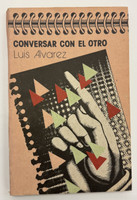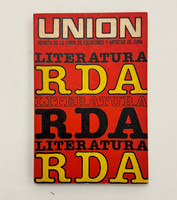- Travel
-
Exhibits
- La Portada Cubana
- Immortal Cuba: Artists Take on Their Heroes
- Seattle Poster Exhibit
- Sandra Dooley & Alejandrina Cué
- The Art of Wayacón
- Cuban Folk Art
- Cuba In Black And White
- 25 Years of Cuban Art Space
- Summer Folk Art Expo
- ¡SPRING AWAKENING FROM CUBA!
- Celebrating The Art Of Cuban Women
- Celebrating Paper, Affordable Art from Cuba
- Art of the Revolution
- Outsider Art
- Lost and Found
- En la lucha: Celebrating Cuban Women and Their Art
- Cuban Art Stash
- 100 Fires: 5 Cienfuegos Artists' Work on Paper
- Waya + Monte! Magic Realism in Cienfuegos
- Viva Cuba Viva! Poster Show
- Cultivando Sueños
- Black Lives Matter in Cuba Jan 9-March 27
- Leandro Soto: Crónicas visuales
- Cuban Canvas
-
Archive
- Global Reflection 2018: Spirit and Community
- Exhibit in the cloud: Contemporary Works on Paper
- MADE IN CUBA! MINNEAPOLIS EXHIBIT
- Cuban Posters and Photography from CCS collection
- AUTUMN SALE! Sept/Oct 2017
- SPRING ARTS AND CRAFT SALE
- Vuelo Directo/Non Stop: Alberto & Alejandro Lescay
- The Many Faces of Fidel
- Somos
- Made in Cuba!
- The US empire in Cuban graphics
- Made in Cuba/Seattle exhibit
- Entre Nos
- Looking Back
- Cuban Art Space
- Membership/Donate
- About Us
- Cuba News
-
Posición Uno (Position One) stands as a landmark collection of revolutionary journalism documenting Cuba's military and social transformation during the early decades of the revolution. The title references military positioning and suggests both vigilance and readiness—themes central to revolutionary Cuban identity during the Cold War period when the island faced constant threats from U.S. imperialism.
Héctor Villaverde's cover design employs striking socialist realist aesthetics, featuring a full-color illustration of a Cuban Air Force pilot in olive-green uniform with blue flight helmet against a vibrant orange-red background. Behind the pilot, Soviet MiG-21 fighter jets fly in formation across horizontal blue stripes, symbolizing Cuba's military modernization through socialist bloc support. The bold outlined typography creates a poster-like quality reminiscent of Soviet propaganda design, while the dynamic composition celebrates revolutionary military prowess and technological achievement.
Norberto Fuentes (born Havana, 1943) began his journalistic career with Mella magazine and contributed to major Cuban publications including Noticias de Hoy, Cuba Internacional, and Granma. He won the prestigious Casa de las Américas Prize in 1968 for his short story collection Condenados de Condado. As a licensed scholar of Hispanic American Literature from the University of Havana, Fuentes brought intellectual rigor to his reportage. His work on Ernest Hemingway in Cuba demonstrates his range beyond revolutionary journalism.
This collection gathers reports and chronicles documenting transcendent moments from the revolution's early years: the recovery of sugar cane industries sabotaged by imperialism, the fight against counter-revolutionary bandits, the flight of MiG-21s, the work of Cuba's first divers, prison rehabilitation programs, the dedicated labor of border guards, and the heroic efforts of State Security members. The book narrates with expressive force episodes from an era when the Cuban people served as the principal protagonist of their own liberation.
Stories include "Morteros 82," "Guardafronteras," "Operaciones en la LCB," "Más rápido y más alto" (about aviation), "La isla más joven del mundo," and an interview with Soviet leader Anastas Mikoyan titled "Más vale ver una vez que escuchar cien" (Better to see once than hear a hundred times). The book is dedicated to Rubén Fonseca Guevara, captain of the Sierra Maestra and "always in combat," with an epigraph from Antoine de Saint-Exupéry: "No se producen viejos camaradas" (Old comrades are not made). Published in July 1982 during "Year 24 of the Revolution," this work captures revolutionary consciousness at its height.
-
-
Discover More at the Center for Cuban Studies







